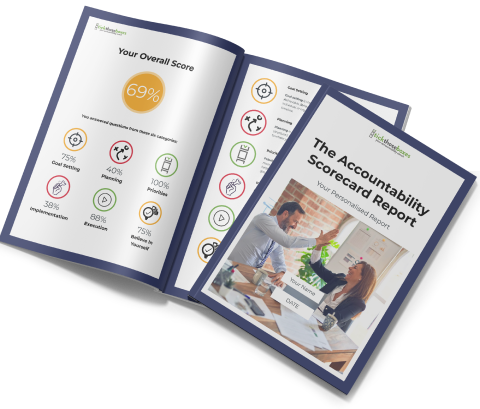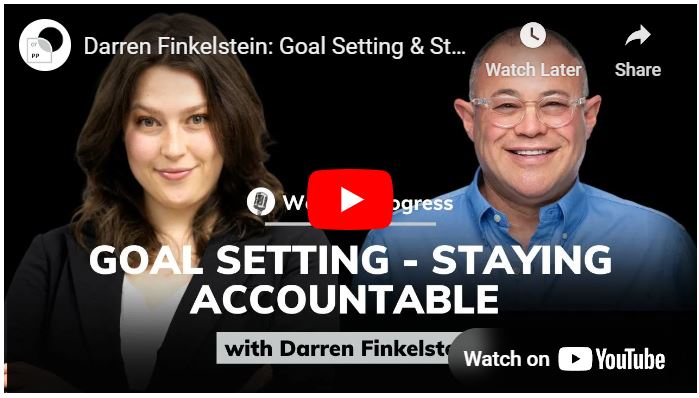It’s common for workplaces to bring together employees from several generations. From Baby Boomers to Gen Z, each group brings different expectations, work styles, and communication preferences. While this mix adds depth through varying perspectives, it can also cause tension if differences are not managed thoughtfully.
Discover your Accountability Score and increase the probability of smashing your GOALS and Getting Sh!t Done!
Mentoring programs offer a practical way to close these gaps. By pairing team members across generations, mentoring encourages respect, learning, and stronger working relationships. Rather than letting misunderstandings stand in the way of progress, it turns multigenerational collaboration into a source of strength.
Understanding Generation Gaps
Different generations bring unique experiences shaped by the social and economic environments they grew up in. This directly influences how they view work and communicate.
– Baby Boomers typically value stability, long-term loyalty, and in-person conversations
– Gen X often prefers independence, efficiency, and clear expectations
– Millennials seek purpose-driven work, feedback, and flexible arrangements
– Gen Z tends to favour tech-led communication, fast results, and innovation
When people from these varied backgrounds work together without understanding each other’s perspectives, issues can arise. For instance, a younger employee might rely on instant messages, while a more experienced team member expects a phone call. Each may misread the other’s approach, causing frustration.
There’s also the risk of assumptions. A senior employee may think their junior is disinterested or impatient. At the same time, younger workers may see older peers as resistant to change. These narratives damage trust and block collaboration.
Mentoring provides structure to break down these perceptions. Older staff members can offer lessons from experience, while younger workers can share current trends and tools. With the right setup, both can benefit and grow.
Benefits Of Mentoring Programs
Mentoring isn’t just about guidance. It’s about building trust and promoting learning. Programs that connect staff across age groups help uncover strengths in people that might otherwise go unused.
Here are some key benefits of mentoring:
– Encourages knowledge sharing
Senior staff can explain business history, market trends, and job-specific processes. In return, junior team members may introduce new technologies, social tools, or cultural insights.
– Builds mutual respect
Understanding where someone comes from helps remove unfair bias. Mentoring improves perception and encourages appreciation of different approaches.
– Lifts team collaboration
Shared learning eliminates divides and improves teamwork. Staff are more likely to problem-solve together when they understand each other’s strengths.
– Supports onboarding and role development
New employees settle in faster when someone guides them. Mentoring creates a support system that helps them succeed and feel included.
Take a finance leader and a grad joining the marketing team. Through structured mentoring, both come to understand one another’s goals. The senior gains insight into current digital strategies. The junior learns how budget planning links to campaigns. They work better because of shared knowledge.
Mentoring also gives junior staff time with experienced leaders, building confidence that helps them take on bigger roles. It’s a way to find future leaders from inside the business and nurture them with purpose.
Implementing Effective Leadership Mentoring
Strong mentoring programs don’t just appear. They require clear planning and leadership buy-in. Mentoring should be set up as a two-way relationship. Everyone involved gains something, whether it’s insight, improvement, or inspiration.
Start with these steps:
– Set clear goals. What does mentoring need to solve? Is it workflow gaps? Communication clashes? Staff disengagement? Having a purpose helps shape how the program runs.
– Involve leadership. When leaders take part, it shows that mentorship applies to all levels. Their example builds trust and ensures the message reaches everyone.
– Pair people based on shared goals, not just age or position. Mentoring works best when both sides have reasons to learn from one another.
– Make mentoring a regular part of work. Set a time in the calendar, provide resources, and build expectations for follow-up.
– Provide feedback opportunities. Let teams share what’s working and what needs more support. This helps the program improve over time.
Mentoring thrives when there’s structure and support around it. Leaders who encourage it often see much stronger engagement across their teams.
Real-World Applications Of Mentoring Programs
Mentoring can be adapted to meet the needs of many different teams. It’s used everywhere from retail and finance to health and education. The common result is better communication, reduced conflict, and a more connected workplace.
For instance, a national retail business observed that younger hires experienced a sense of alienation, while senior staff grew weary of misunderstandings. The business implemented a project-based mentoring system. Each term, employees from different age groups worked together on two-week tasks.
This approach gave each person a role, a voice, and a chance to teach and learn. Over time, they saw a lift in both morale and performance. The mentoring program became a permanent fixture and an expected part of career development.
When done right, mentoring is more than just sharing professional tips. It creates space for real conversations. Teams that may not have spoken before begin working smoothly because they now understand each other.
Building For The Future
Mentoring supports growth, not just for individuals but for the broader workplace too. Mentoring fosters relationships that enhance the efficiency of work. Staff who participate in mentoring often feel more connected, leading to greater loyalty and lower turnover.
It also encourages regular learning. As industries shift, mentoring helps keep people updated and supported. Teams stay ready, regardless of what changes come.
Companies that prioritise mentorship often find strong internal leadership candidates. These are people who already understand the business and can step up confidently. With mentoring, these future leaders learn from experience while developing their own voice.
It supports long-term culture by reminding everyone that learning matters. Even senior leaders benefit from fresh input. This shared mindset creates a resilient, dynamic team.
Fostering Accountability Through Mentoring
Mentoring and accountability go hand in hand. When someone knows they’ll be checking in regularly with a mentor, they’re more likely to follow through on plans.
Mentors offer guidance but also serve as accountability partners. Their questions keep goals top of mind. Statements like “What’s next?” or “Have you done that yet?” create useful pressure. Progress becomes expected, not optional.
To make accountability part of mentoring programs, try the following:
– Start with clear expectations from both sides
– Lock in regular check-in times from the start
– Build in goal-setting during sessions
– Promote honest conversations and create space to discuss setbacks
Mentoring helps create habits where people own their actions. This approach works better than top-down pressure. People don’t just want to do the work — they feel responsible for it.
Bridging Generational Gaps: The Way Forward
Generation gaps don’t have to pull teams apart. Mentoring helps people see the value in different approaches and experiences. By building real connections between age groups, it unlocks hidden strengths.
When supported by leadership and given proper structure, mentoring becomes a key part of bringing people together. It helps pass along wisdom, spark new ideas, and unify the way teams operate.
Mentoring isn’t just a way to transfer knowledge. It builds trust, and culture, and gives everyone a role in shaping the future.
“Tick Those Boxes” specialises in helping individuals and organisations become more accountable. Contact our team to see how our programs may help you establish a more effective and accountable workplace, allowing you to do the things you say you will do and getting your teams to do the same.
To cultivate success and harmony across generations in your workplace, explore how leadership mentoring can support stronger collaboration and long-term growth. Our tailored approach helps teams learn from one another, build trust, and stay aligned. “Tick Those Boxes” specialises in helping individuals and organisations become more accountable. Contact our team to see how our programs may help you establish a more effective and accountable workplace, allowing you to do the things you say you will do and getting your teams to do the same.


